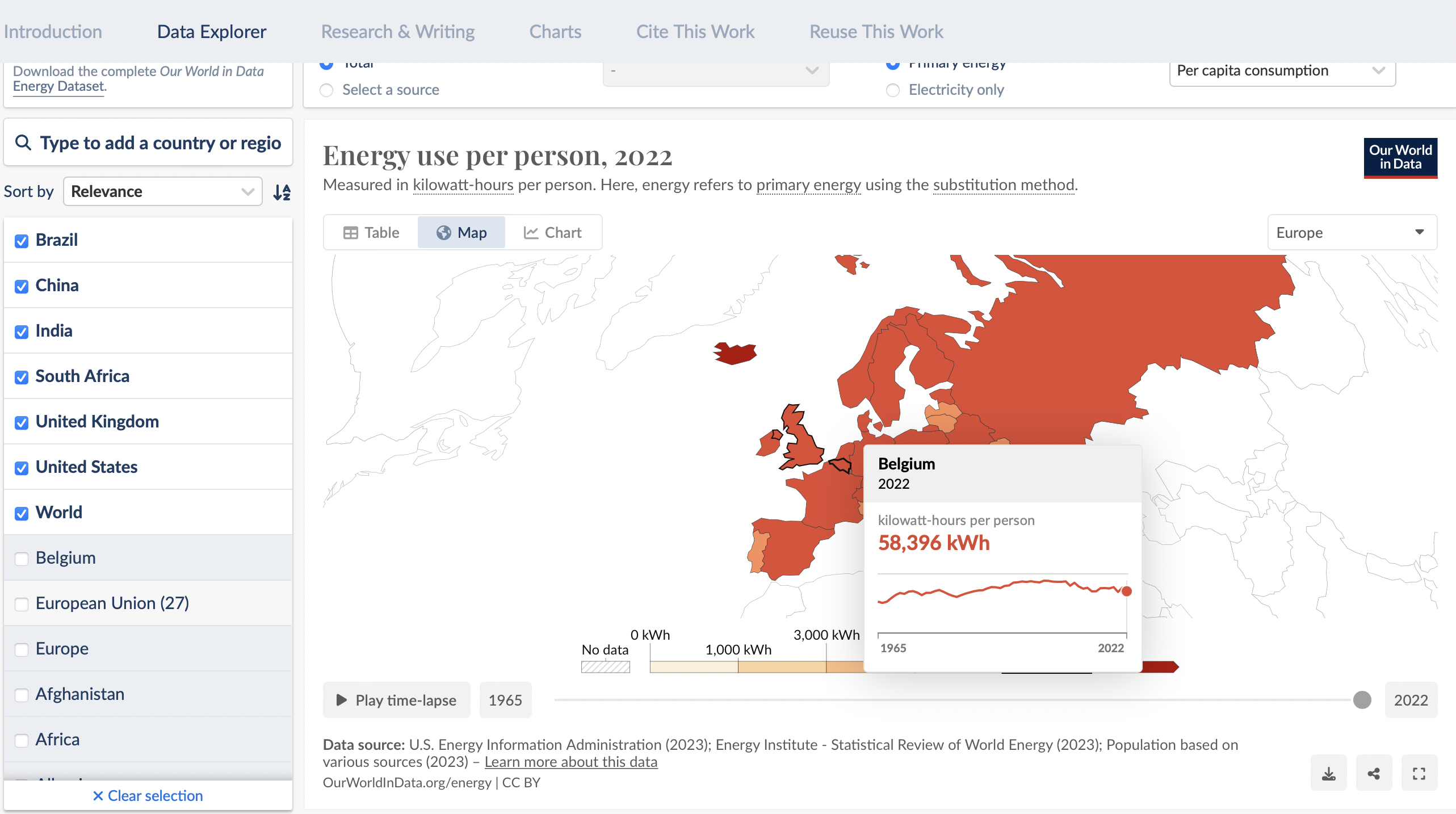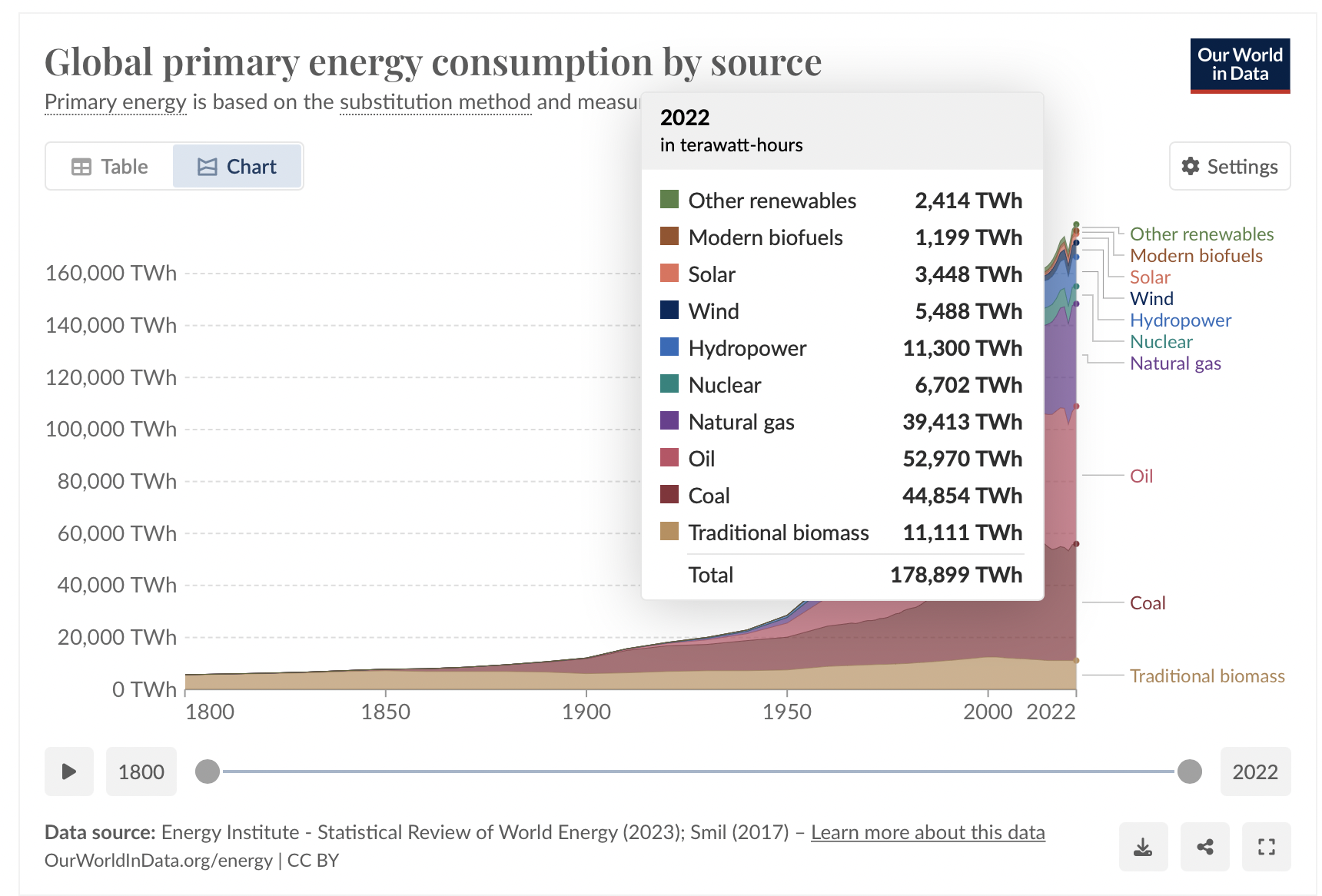BRIGID project: data
Data worth monitoring
We encourage you to energetically join the energy discussion. But if you want to join the discussion, better know your numbers.
Below is a list of external sites that provide real time data about energy, CO2, pollution, economic development, etc. that are worth monitoring.
BRIGID Cheat Sheet
As an appetiser, this is our BRIGID Cheat Sheet. These tables contain numbers from the physics handbook. We use them for quick back-of-the-envelope calculations. It shows the unmatched energy density of the strong force inside nuclear fuel. Be our guest.
Before we start, some explanations:
HM = Heavy Metal: a term generally used by the tradional nuclear industry to indicate the uranium contents of the fabricated fuel assemblies, i.e. a particular mixture of di-oxides of mainly U-238 and U_235. Due to the operation of the current reactors, only a small fraction of the fuel is actually fissioned after a 3-year stay in the reactor vessel. What remains is dangerous, radio-toxic Spent Nuclear Fuel (SNF). An MSR does not use this wasteful operation mode.
Tails: leftovers from the uranium enrichment process. Consists mainly of depleted uranium, i.e., U-238 with less than 0.3% U-235.U-238 is not considered "fuel" by the traditional nuclear industry, as it is "fertile" but not "fissile". In the mind of the original nuclear designers, these tails should be converted into plutonium Pu-239, which is considered fuel. However, this requires treatment by neutron radiation in a fast breeder reactor. The most efficient Pu breeder reactor for civilian purposes is cooled by sodium, but the development of these reactors has been gradually stopped, except in Russia. This is a good decision, as the sodium in such reactors are a fire hazard. Consequently, the tails lost all civilian purpose, and are currently stored without much further use.
Today, efforts are made to use lead cooling instead of sodium. This is less efficient, but much safer. It is also much harder to implement. These reactors are in a conceptual stage only, and for various technical reasons will result in small reactors only: SMR or Small Modular Reactors. SMR's are a bad idea, for more than one reason. All these designs use solid fuel still. In contrast, BRIGID targets the treatment of thorium instead of U-238, and in a liquid form, using chemically inert salt as a coolant. This process is much, much easier to implement.
Consequently, BRIGID does not generate "tails". BRIGID however envisions to use the existing tails in a second iteration of the MSR design. There is no hurry there whatsoever, as the tails are not going anywhere, while there is suffient thorium to last for centuries.
NPP: Nuclear Power Plant
MWd/ton HM: standard Burn-Up (BU) measure of NPPs: the thermal energy generated by 1 ton of Heavy Metal (HM) in a 1 MW reactor operating for 1 day. This measure takes into account that not all "fissile" fuel (usually U-235) is fissioned, but also the fissioning of some amount of Pu-239 generated by neutron radiation of U-238 residing in the HM whilst inside the working reactor. BRIGID envisions a much, much higher BU, thanks to the use of liquid fuel, that can remain much longer in the reactor because of the absense of cladding, and that can be on-line purified by removing fission products that would hinder the reaction rate (traditionally called "reactor poisons").
LWR: Light Water Reactor: any type of reactor using solid fuel and light water as a moderator. All Belgian reactors are LWR. All LWR used for energy conversion are also pressurised (PWR).
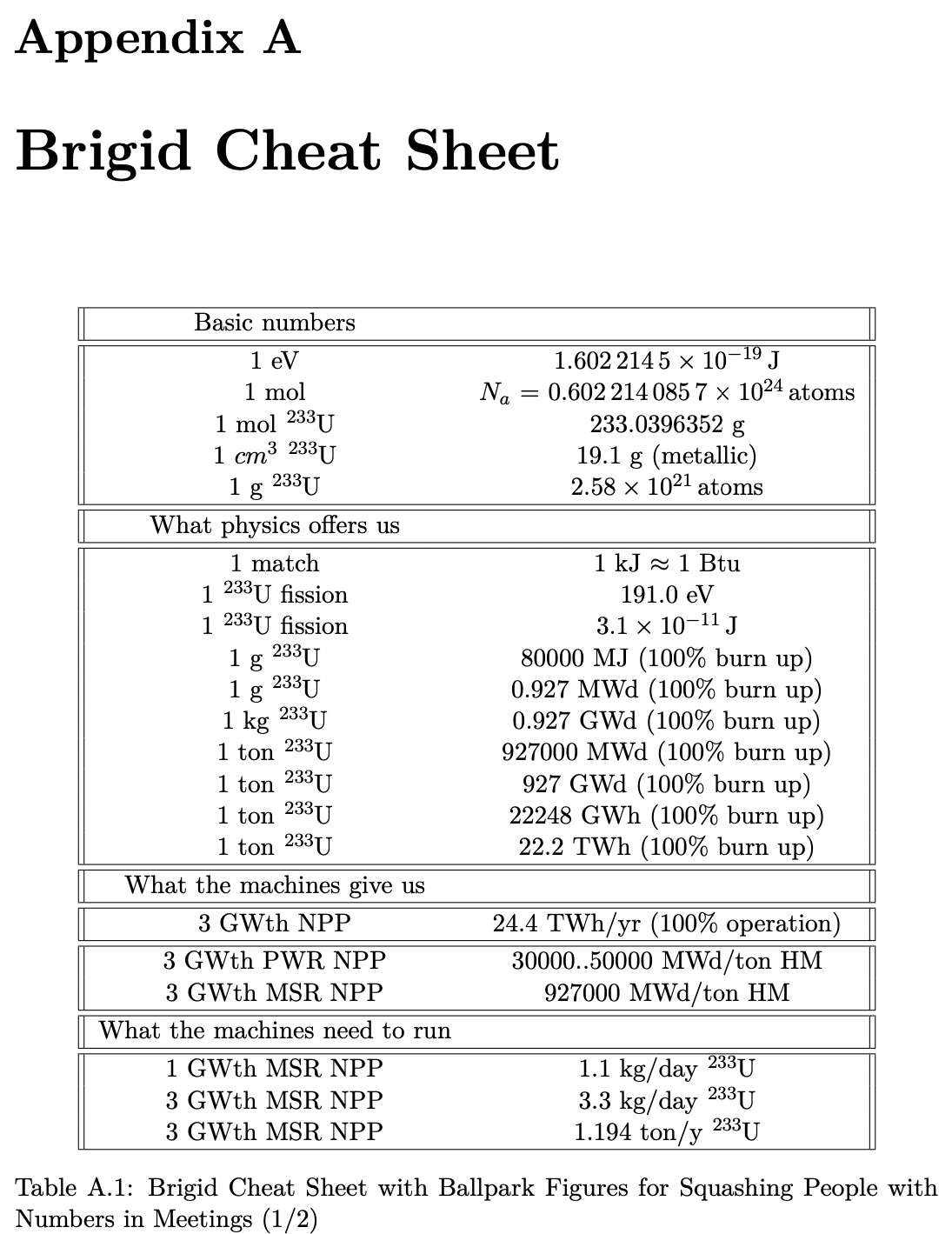
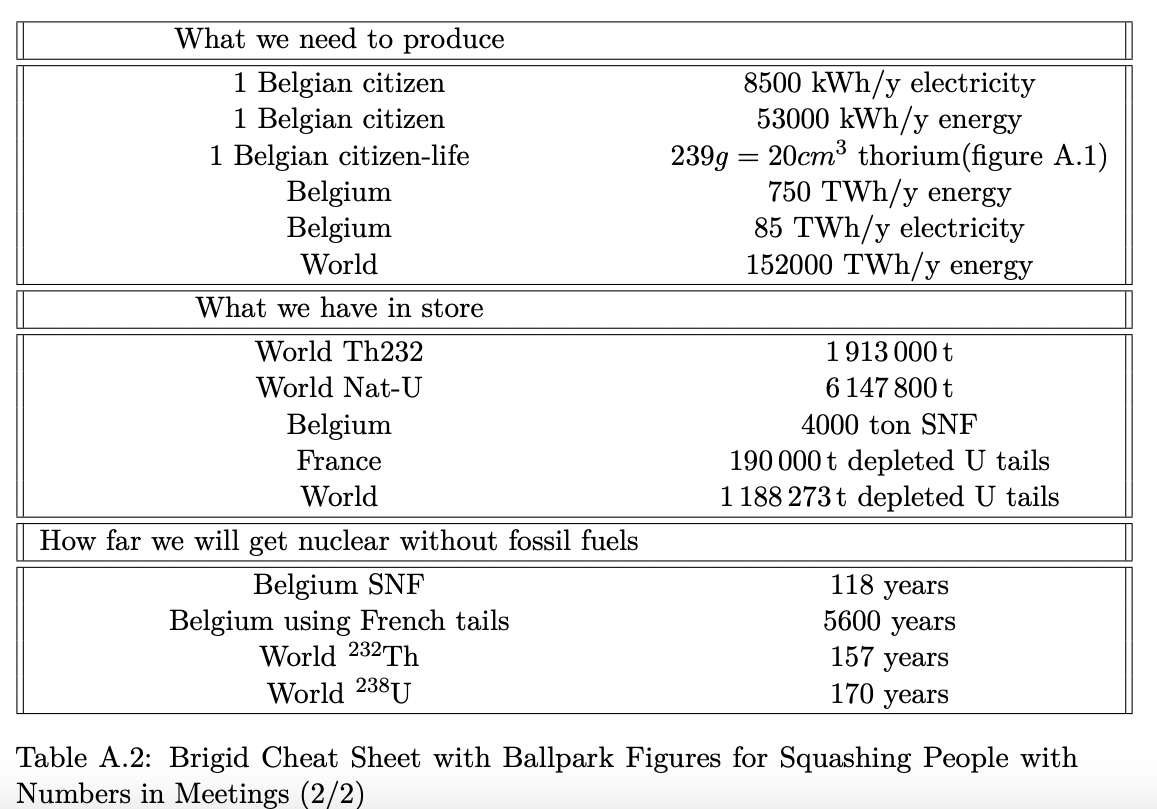
ELIA real-time electricity production data in Belgium
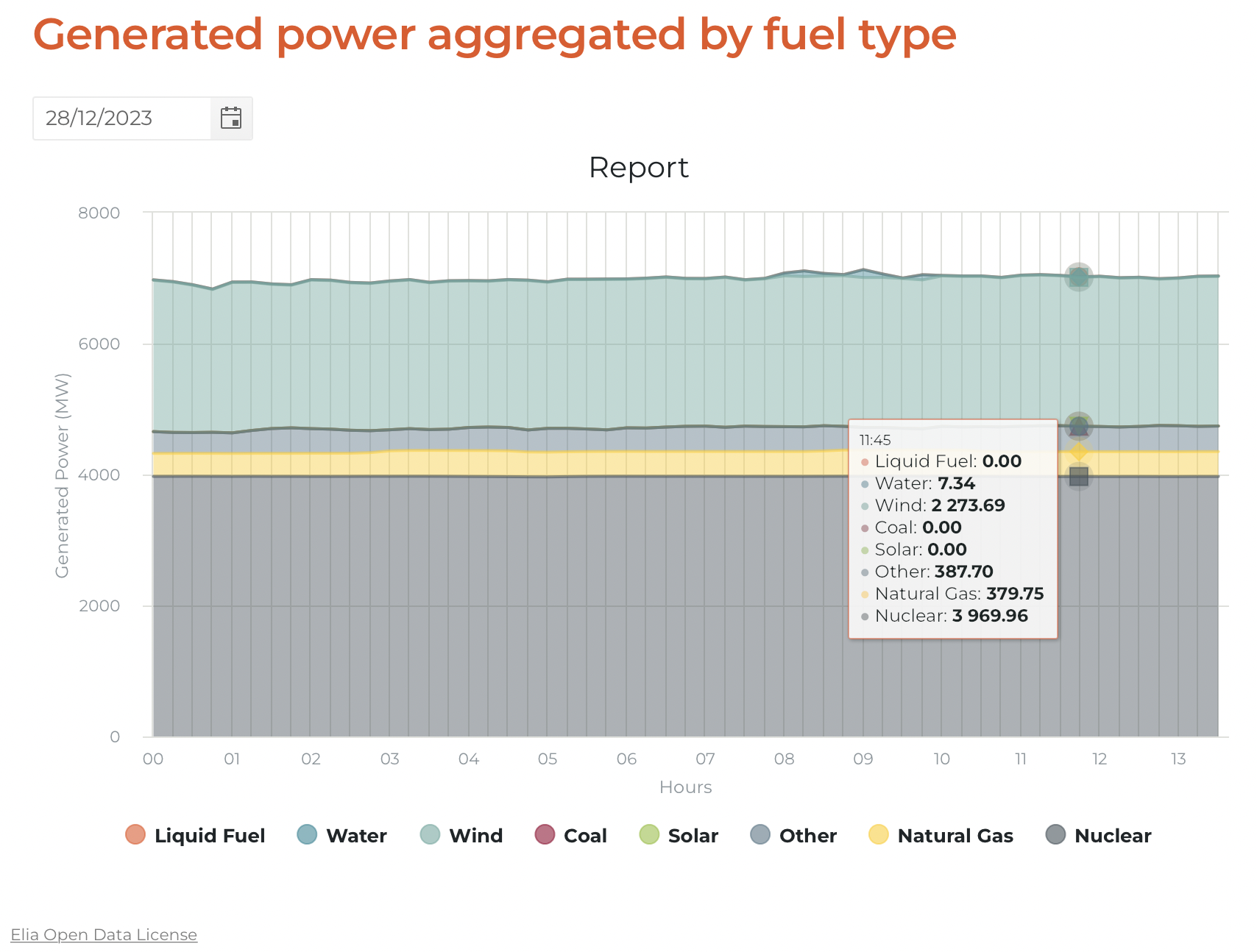
ELIA is the Belgian TSO (Transmission System Operator). ELIA is not a producer. It's main responsability is the electrical grid stability, in a European context. For that reason, ELIA is part of ENTSO-E (European Network of Transmission System Operators for Electricity). (Note there are also gas operators.)
ELIA web site
ENTSO-E web site
ELIA is obliged by Law to publish the Belgian grid data. Next are some real-time examples of the Belgian situation.
You can assess the current situation here:
https://www.elia.be/en/grid-data/power-generation/energy-generated-by-contracted-power-units
or directly here via the ELIA open data API:
An overview of available power (LF=Light Fuel, NU=NUclear, WA=WAter, WI=WInd, NG=Natural Gas
An historic overview of generated power (LF=Light Fuel, NU=NUclear, WA=WAter, WI=WInd, NG=Natural Gas
Todays energy mix (scroll down and manage cookies)::
Wind energy: the Belgian Offshore Platform (BOP)
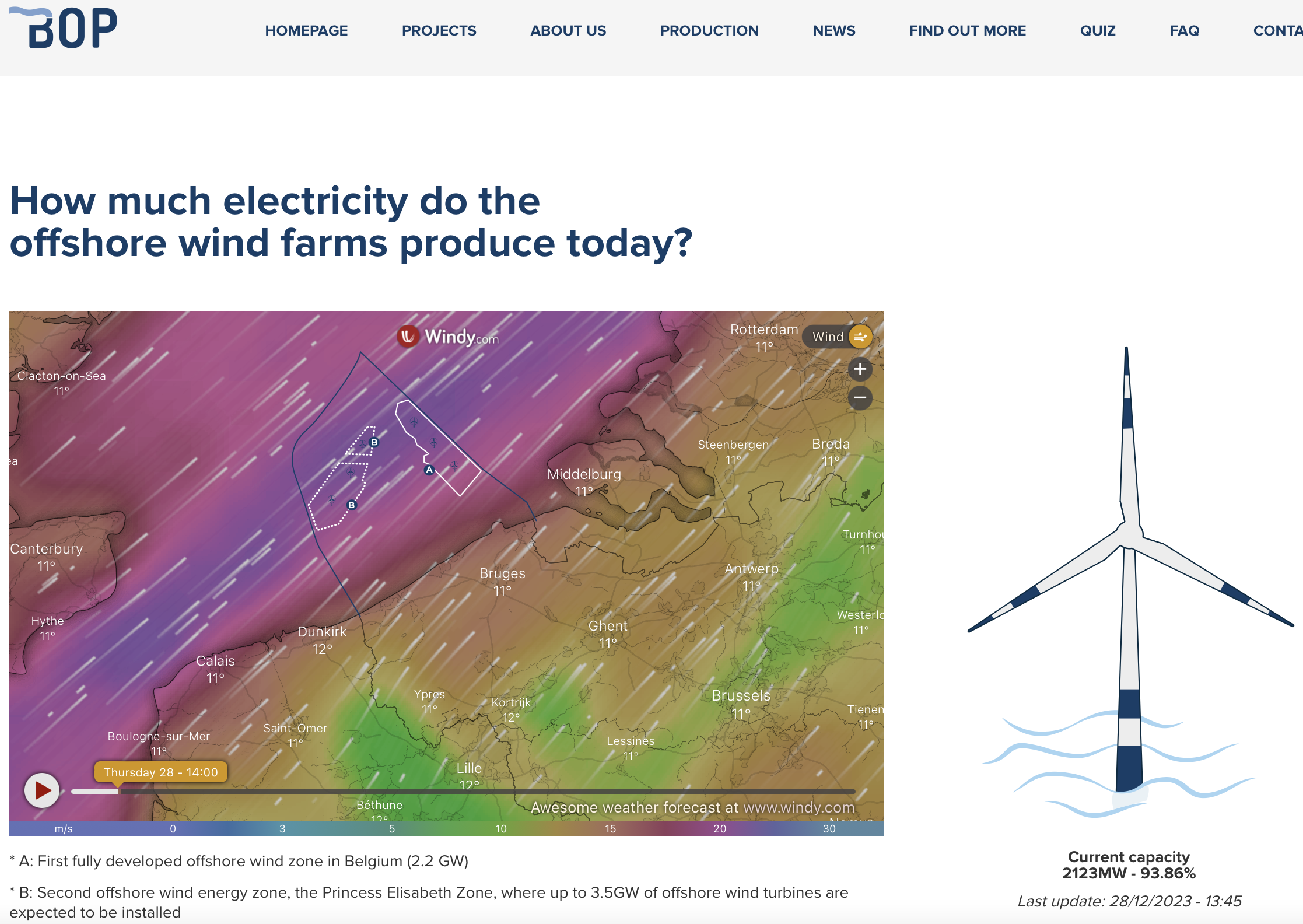
Most Belgian wind energy is off-shore. The Belgian Offshore Platform (BOP) provides real-time data on installed power, generated electricity and efficiency ratings
for offshore wind turbines.
The deployment of Belgian off-shore depends entirely on government funding, and is notably promoted by Belgian dredging companies, who sense a growing business opportunity.
Wind turbines are useless during DunkelFlaute as well as during stormy weather, while they upset the grid during heavy winds and periods of low demand. Due to the funding mechanism, and while causing grid overloading and consequently negative electricity prices. Which is NOT a good thing. They also plummet the efficiency and sky-rocket the maintenance cost of gas-fired backup plants. Their maintenance is a problem, and there is no end-of-life policy. Due to ever growing demands for obtaining renewable goals, they are replace by ever taller turbines even before being amortised. This causes an economical crisis amongst the manufacturers.
Offshore wind also requires a billion EUR investment in grid expansion by ELIA. At the same time, these grid expansions conflict with the requirements of BRIGID siting.
Take-away message: the problem with wind energy is not that there isn't any. The problem is that it's unreliable and unexpectedlyexpensive (for some), and useless at the same time, if BRIGID is implemented..
Website:
https://www.belgianoffshoreplatform.be/en
For the production of Belgian wind energy, you can find the real-time data here:
OWID: Our World in Data
ICE and the Dutch TTF market natural gas prices
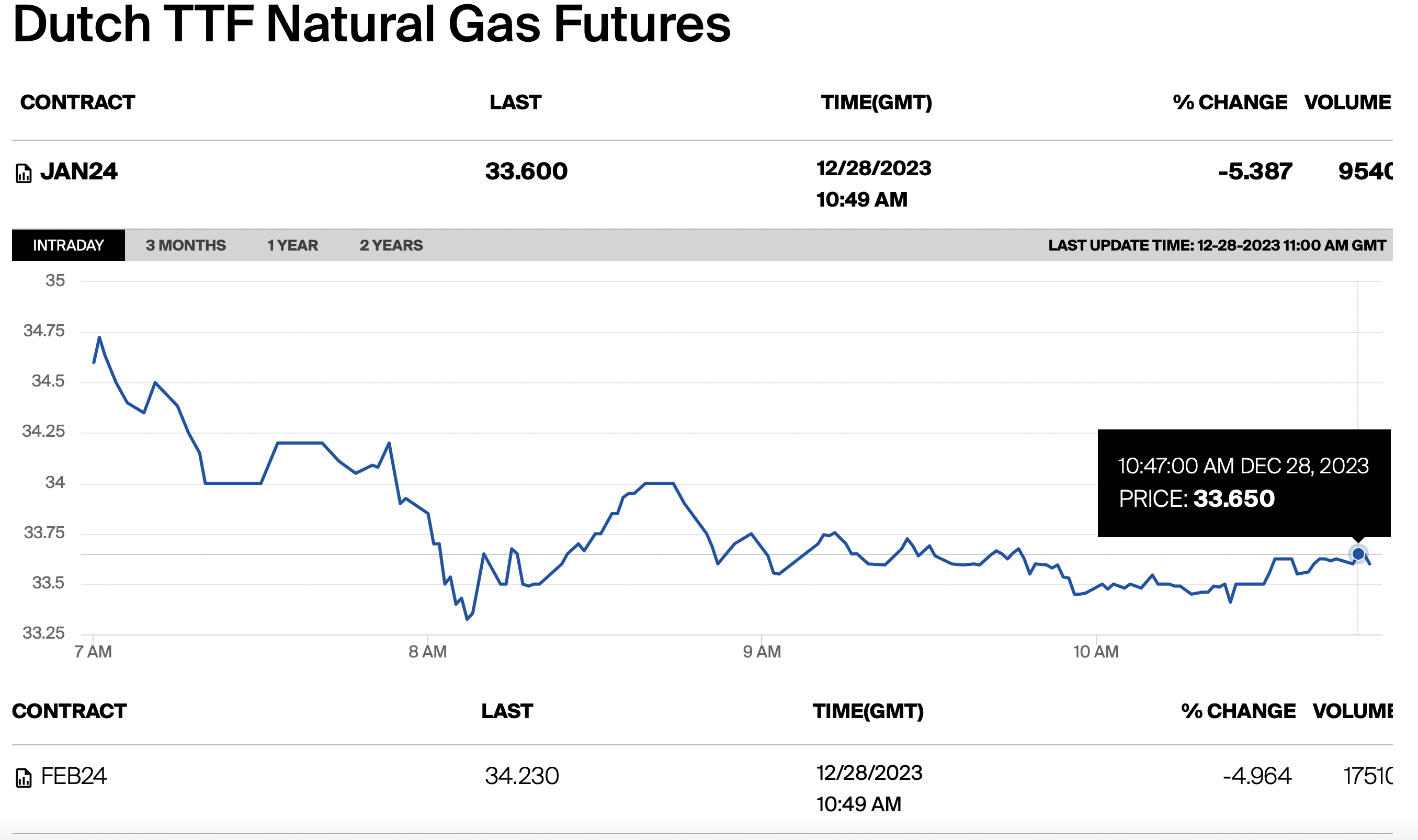
TTF is the Dutch market place for trading natural gas.
It is part of a larger and more general commodity trader ICE, that trades futures on gas, coal, oil and oil products:
www.ice.com
The natural gas price is particularly relevant for Belgium and Europe, as the electricity price is largely determined by the European gas price.
You can assess the current gas price situation in real time here:
https://www.ice.com/products/27996665/Dutch-TTF-Gas-Futures/data?marketId=5696271
EPEX-SPOT international electricity prices
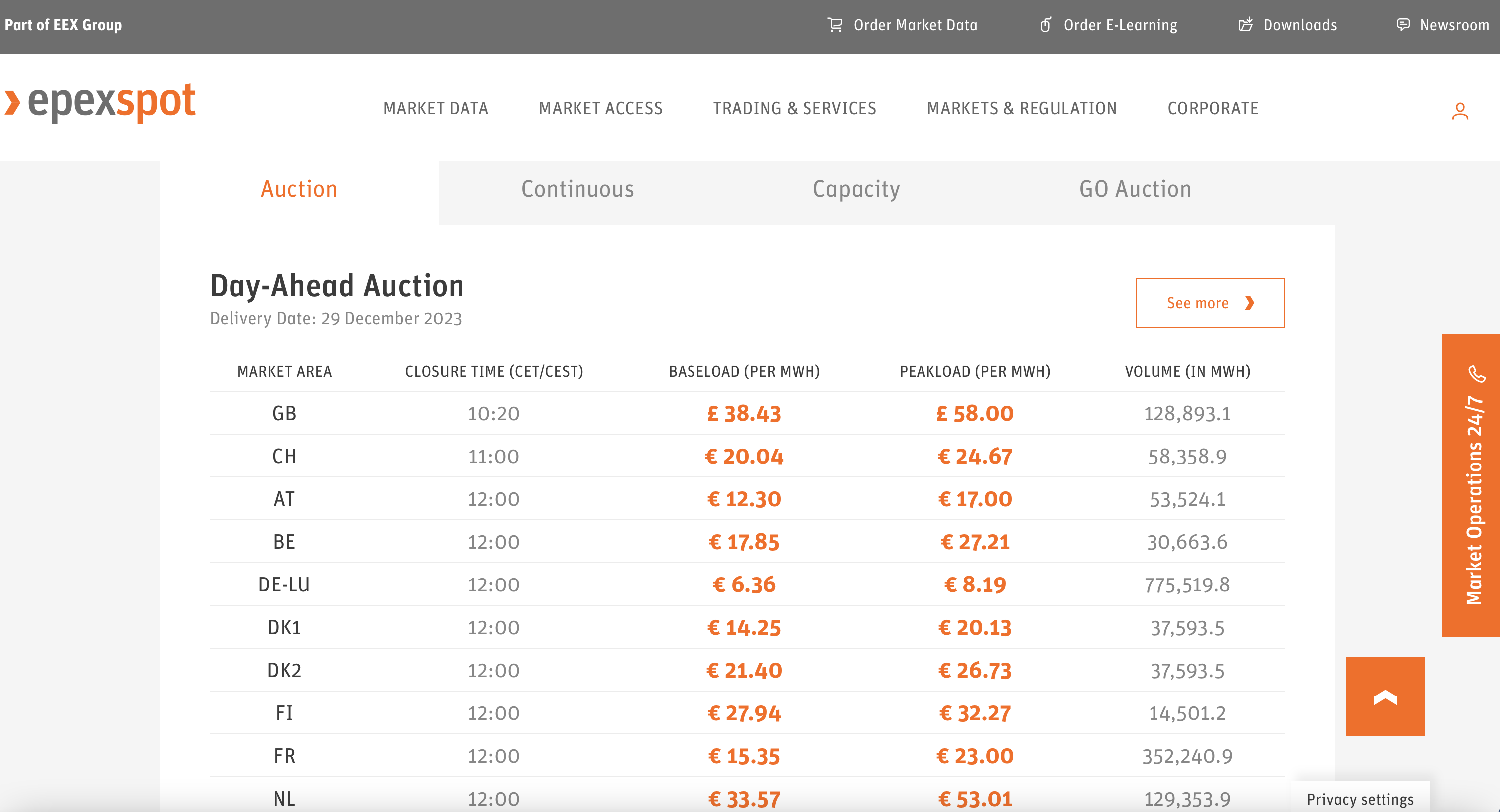
EPEX-SPOT is the prime European electricity market for short term trading. It is part of the larger EEX group.
EPEX lists electricity prices per country and in EUR/MWh every 15 minutes.
You can assess the current situation here:
https://www.epexspot.com/en
ELIA grid investments

ELIA is the Belgian TSO (Transmission System Operator). It's main responsability is the electrical grid stability.
ELIA web site
Fluvius grid investments
EUROSTAT: European statistics
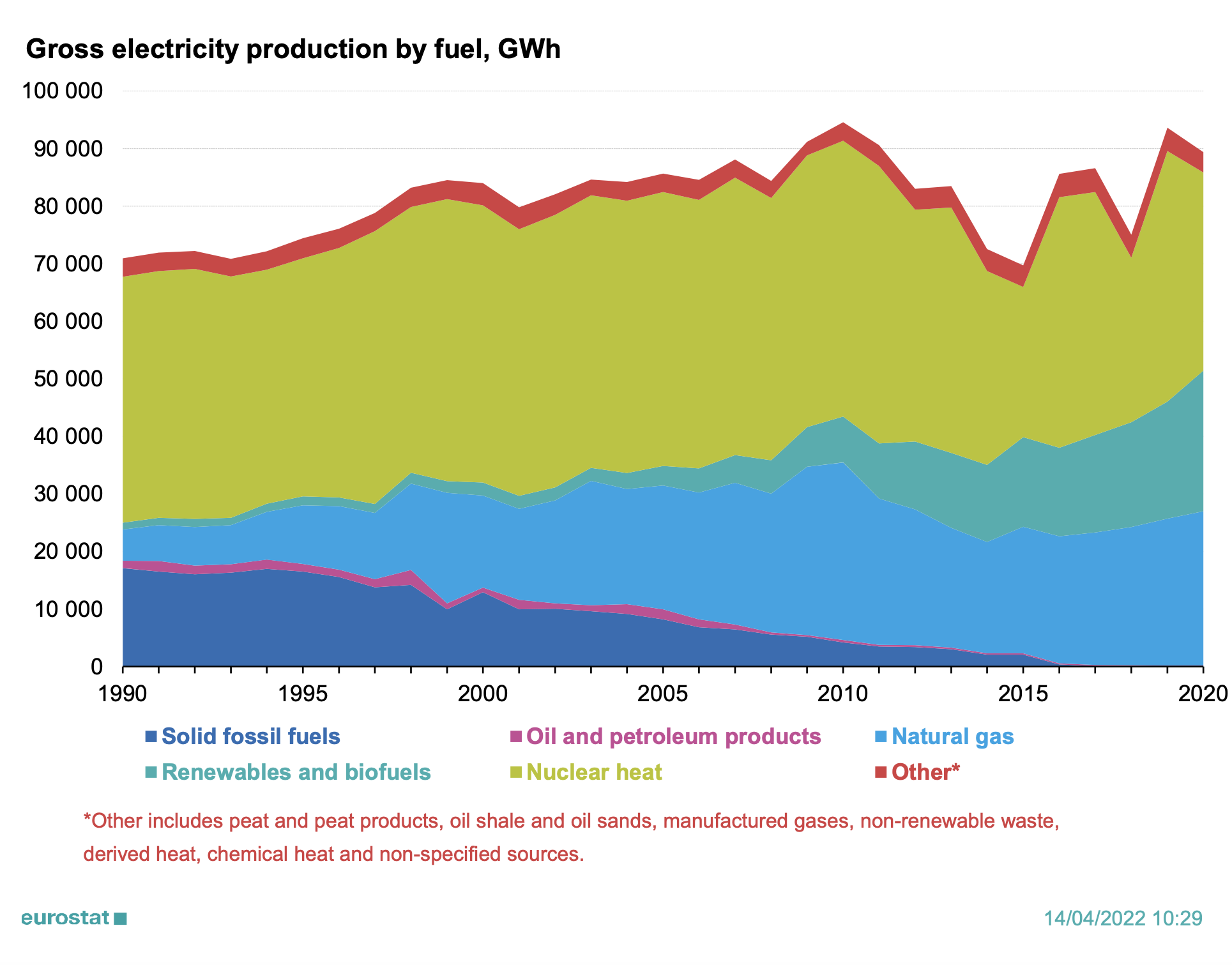
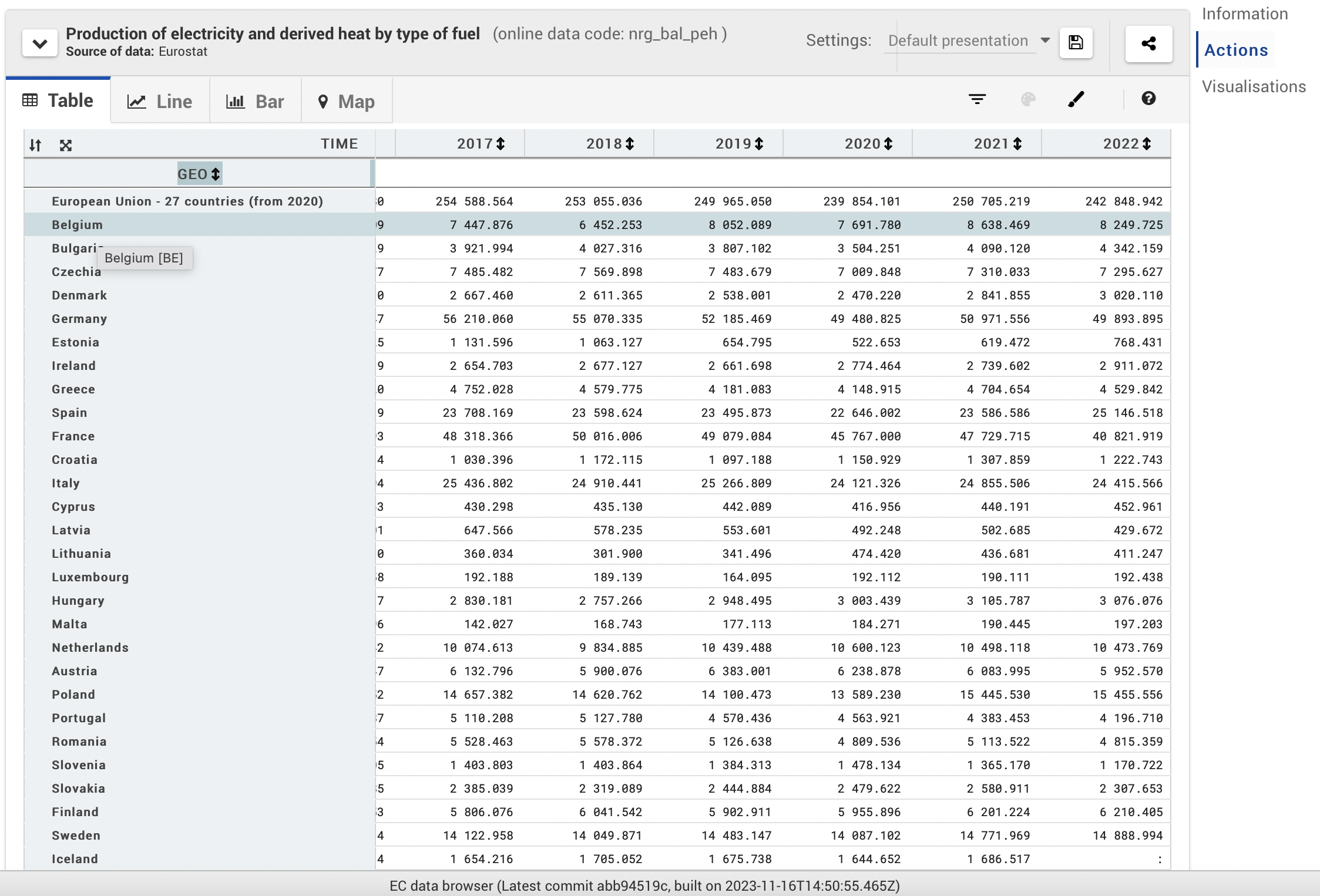
Eurostat is the statistical office of the European Union.
EUROSTAT website:
EUROSTAT website
EUROSTAT web site
For interactive access to Sankey diagrams on Belgian energy:
Project BRIGID public website/
© Ian's Corner BV, Dept DoNE 2018-2050
All rights reserved
Last update: 2024-07-19
Stay tuned!




